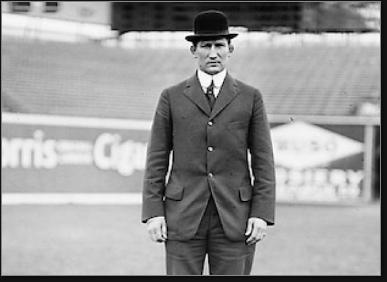|
 Bob Folwell Bob Folwell
Sport: Football
Born: February 17, 1885
Died: January 8, 1928
Town: HarrisonTownship
Robert Cook Folwell Jr. was born February 17, 1885 in Harrison Township, in Gloucester County. He attended Haverford School in suburban Philadelphia. He was an accomplished wrestler and the star halfback for the football team and made several prep All-American lists as a senior in 1903. Bob continued his gridiron success at the University of Pennsylvania, playing for coach Carl Williams. The Quakers were undefeated in 1905, his first season on the varsity. Bob was one of three featured backs on the 1906 team, alongside Bill Hollenback and Eddie Green. All three received All-American recognition. That winter he won the 175-pound Intercollegiate Wrestling Association championship.
In 1907, Bob demolished the Quakers’ record books. He scored 18 touchdowns—still a school record more than a century later—and scored 95 points. Penn scored victories over 11 of the 12 teams it played. The lone exception was a loss to Pop Warner’s Carlisle Indian School and his star player Jim Thorpe. The 1907 Penn squad was recognized as national champion, outscoring opponents 256–40.
Bob learned a thing or two about football at Penn and decided to get into coaching. He was hired to coach at Lafayette in 1909 and led the team to a 7–0–1 record. He coached in 1910 and half of 1911, leaving the school with a 19–2–1 record to take the head job at Washington & Jefferson. Bob brought his philosophy of relentless attack to the Presidents and the 1913 team was the highest-scoring in the nation. The defense was none too shabby, either. That season, W&J held Thorpe’s Carlisle squad to a scoreless tie. In 1914, the President’s lost to #1 ranked Harvard, 10–9. The game-tying extra point hit the crossbar and bounced back, denying Bob and his players a chance to claim co-ownership of the national championship. When they beat powerhouse Yale two games later, Bob received a note of congratulations from President Roosevelt, a Harvard man.
 From 1916 to 1919, Bob coached at his alma mater. He whipped the players into shape and got Penn back on the winning track, leading the team to the Rose Bowl in 1916 (a loss to Oregon). Following the 1917 season a faculty uprising nearly cost him his job. The Quaker coach was not building the character of his players, they claimed. Bob fought the charges and remained as coach for two more years and survived the Spanish flu that swept through Philadelphia in the fall of 1918. In 1920, Bob moved to the US Naval Academy. He beat Army in 1920 and ’21, lost in ’22 and the teams played to a scoreless tie in 1923. After the season, Bob was invited to take his team to the Rose Bowl again. This time, the result was a 14–14 tie with Washington. Quarterback Ira McKee was named MVP of the game. From 1916 to 1919, Bob coached at his alma mater. He whipped the players into shape and got Penn back on the winning track, leading the team to the Rose Bowl in 1916 (a loss to Oregon). Following the 1917 season a faculty uprising nearly cost him his job. The Quaker coach was not building the character of his players, they claimed. Bob fought the charges and remained as coach for two more years and survived the Spanish flu that swept through Philadelphia in the fall of 1918. In 1920, Bob moved to the US Naval Academy. He beat Army in 1920 and ’21, lost in ’22 and the teams played to a scoreless tie in 1923. After the season, Bob was invited to take his team to the Rose Bowl again. This time, the result was a 14–14 tie with Washington. Quarterback Ira McKee was named MVP of the game.
Bob’s stock was rising and he was courted successfully by Tim Mara, owner of the new NFL team in New York, the Giants. Bob led the club to an 11–6 record—8–4 in NFL games and 3–2 against independent teams. Both of those losses came in Florida in January 1926 against the Coral Gables Collegians. The drawing card of the Giants was his old nemesis, Jim Thorpe, by this time in his late 30s. He chose as team captain Rutgers All-American Nasty Bob Nash.
The 1926 season found Bob heading the Philadelphia Quakers of the American Football League, a rival to the NFL built around Red Grange. The league was a flop but Bob’s Quakers won the championship with an 8–2 record. They played his old team the Giants in a snow-blown exhibition and lost 31–0. At some point during the AFL season, Bob developed a bone infection in his hip. It made coaching impossible in 1927 and he was forced to hobble around with the use of a cane at the age of 42. In early January 1928, he underwent surgery to clean out the joint. The operation, performed by doctors at Philadelphia’s Jefferson Hospital, appeared to be a success, but his health declined suddenly and he died on January 8.
|
|
|